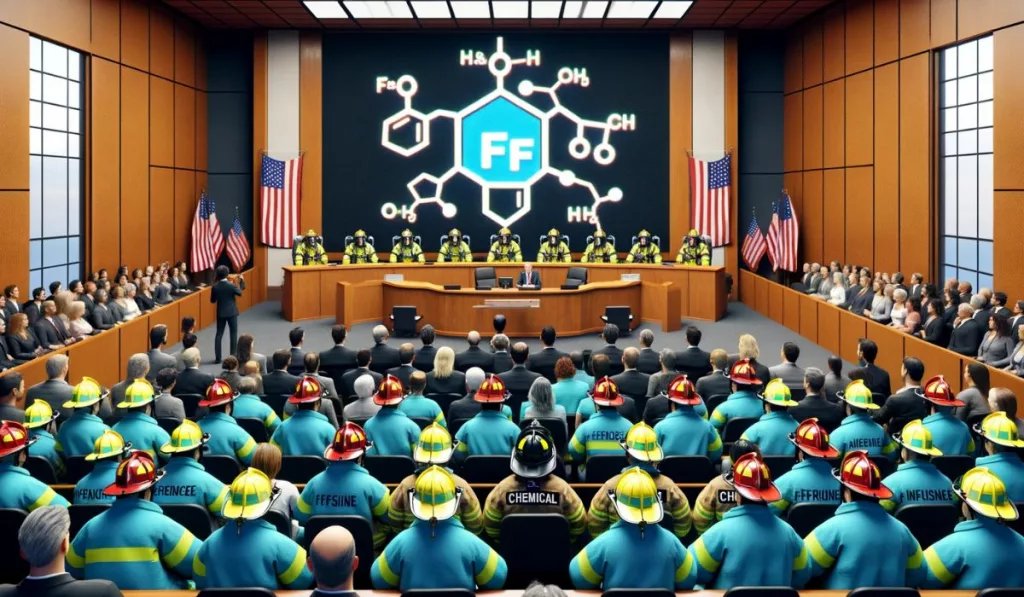Firefighting has long been synonymous with heroism and protection. However, recent developments have exposed a hidden threat within the arsenal of firefighting tools. Aqueous Film-Forming Foam (AFFF), once hailed for its efficiency in suppressing flammable liquid fires, is now at the center of a legal storm.
A growing number of lawsuits are unraveling, shedding light on the environmental implications of AFFF. Not just that, even the firefighters who use AFFF to save others are at risk of developing severe health issues. This is raising concerns about its widespread use. According to Consumer Notice, there are 6,715 active AFFF lawsuits in the U.S. as of January 2025.
Have a look at: The Future of Digital Marketing: Top 5 Trends to Look at in 2025?
Understanding AFFF: The Double-Edged Sword
According to TorHoerman Law, AFFF is a firefighting foam known for creating a thin film on the surface of flammable liquids. The film suppresses fires by preventing the release of flammable vapors.
It has been a crucial tool for emergency responders, military operations, and industrial facilities dealing with hazardous materials. However, the key ingredients in AFFF, per- and polyfluoroalkyl substances (PFAS), have been linked to severe health and environmental issues.
PFAS are synthetic chemicals characterized by strong carbon-fluorine bonds, making them resistant to heat, water, and oil. While these properties contribute to the effectiveness of AFFF, they also make PFAS persistent in the environment. Therefore, they are also called by the infamous label of “forever chemicals.”
The Legal Landscape Unfolding

As the environmental impact of PFAS became more evident, a wave of lawsuits emerged. These lawsuits targeted manufacturers, distributors, and users of AFFF. Plaintiffs in these cases often include firefighters, military personnel, and residents living near areas where AFFF was used. The lawsuits allege various issues, from environmental contamination and property damage to personal injury and adverse health effects.
Manufacturers such as 3M, Chemours, and DuPont have found themselves at the epicenter of AFFF litigation. They face allegations of negligence, failure to warn, and product liability. The legal proceedings are complex, involving intricate scientific evidence to establish the causal link between AFFF exposure and the damages suffered by the plaintiffs.
Many lawsuits are raised by firefighters for developing severe health problems after AFFF exposure. Some of the health problems linked to AFFF exposure are:
- Bladder cancer
- Kidney cancer
- Prostate cancer
- Increased cholesterol levels
- Decrease in infant birth weights
- Decreased vaccine response in children
- Breast cancer, etc.
The plaintiffs are filing these lawsuits to claim their rightful compensation for the problems they have suffered. They need compensation for medical expenses, lost wages, decreased quality of life, etc.
However, not many settlements have been made yet. But if you have enough evidence to establish that your health problems result from AFFF exposure, justice will be served. The settlement you receive, though, will depend on your specific case. There are no specific AFFF lawsuit settlement amounts or ranges decided yet. However, experts predict that the amount can be anywhere between $40,000 to $300,000.
Environmental Implications
The environmental implications of AFFF go beyond the immediate suppression of fires. The persistence of PFAS in soil and water raises concerns about long-term contamination and its impact on ecosystems. Wildlife, aquatic organisms, and even plants can absorb these chemicals, potentially leading to bioaccumulation in the food chain.
Aquatic ecosystems, in particular, are vulnerable to AFFF contamination, as PFAS can leach into water sources, affecting fish and other aquatic life. The potential for bioaccumulation raises questions about the safety of consuming fish from contaminated waters and the broader implications for human health.
According to an NCBI article, many freshwater resources have revealed 1–5% by weight of per- and polyfluoroalkyl substances in collected samples. Moreover, AFFF-related PFAS contamination in drinking water supplies near affected areas has been discovered. This has prompted regulatory agencies to reassess safety standards and guidelines for PFAS in drinking water.
The Human Toll
Beyond the environmental impact, the human toll of AFFF exposure is critical to the lawsuits. Firefighters who have been on the front lines using AFFF in their firefighting efforts are discovering elevated levels of PFAS in their blood. These substances have been linked to various health issues, including hormonal disruption, immune system suppression, and an increased risk of certain cancers.
The Veterans of Foreign Wars mentioned a study to see the impact of AFFF exposure on military personnel. Some blood samples of military firefighters with testicular cancer were tested some time back. The 530 blood samples revealed a higher PFOS concentration than other cancer-free service members. The study shows that a higher concentration of PFOS has been linked to testicular cancer.
Military personnel, especially those stationed at bases where AFFF was extensively used, are also facing health challenges attributed to PFAS exposure. The lawsuits filed by veterans and their families highlight the long-term consequences of AFFF use in training exercises and emergency response situations.
Often unaware of the potential hazards, residents grapple with property devaluation and health concerns due to AFFF-related contamination. As awareness grows, more communities join the legal battle to hold responsible parties accountable for the damages incurred.
Regulatory Responses and Industry Changes
In response to the growing concerns surrounding AFFF, regulatory agencies are taking steps to address the issue. The U.S. Environmental Protection Agency (EPA) has set health advisory levels for PFAS in drinking water. Even states are developing their regulations to mitigate the risks associated with AFFF. In fact, a Bloomberg article shows that 24 states have banned the use of AFFF or have restricted its usage.
Internationally, some countries have banned or restricted certain types of PFAS in firefighting foam. However, the global nature of the issue requires coordinated efforts to establish comprehensive regulations and standards for AFFF use and disposal.
In the wake of the lawsuits and increased scrutiny, the firefighting industry is also changing. Alternative foams that claim to be PFAS-free are being developed and adopted to provide effective firefighting solutions.
Eco-Crisis in the Digital Age: A Closer Look at AFFF Lawsuits and Tech Solutions
The eco-crisis in the digital age presents a unique intersection of environmental challenges and technological advancements, with Aqueous Film Forming Foam (AFFF) lawsuits serving as a prime example. The rise in AFFF-related lawsuits highlights the growing concern over environmental safety and corporate responsibility.
However, the digital age also brings forth innovative tech solutions. Advanced monitoring systems, data analytics, and AI-driven approaches are being employed to track environmental impact, predict contamination patterns, and develop safer, eco-friendly alternatives to harmful substances. This blend of legal actions and technological initiatives represents a dual approach to addressing and mitigating the eco-crisis in our time.
Key AFFF Lawsuit Elements:
- Environmental Contamination
- Health Hazards Linked to PFAS
- Corporate Responsibility
- Legal Precedents
- Remediation Efforts
Tech Solutions for Eco-Crisis:
- Advanced Monitoring Systems
- Data Analytics
- AI-Driven Environmental Assessment
- Development of Eco-Friendly Alternatives
- Public Awareness and Education Campaigns
Wrapping Up
The legal battles are shaping the environmental accountability landscape as AFFF lawsuits unfold. Manufacturers, distributors, and users of AFFF are held accountable for the consequences of PFAS persistence in the environment. The outcomes of these lawsuits will likely set precedents for future environmental litigation and contribute to developing regulations.
In pursuing justice, it is essential to consider the compensation for damages and the implementation of preventive measures to avoid future disasters. Developing and adopting safer firefighting alternatives, coupled with stringent regulations, can pave the way for a more sustainable approach to fire suppression.










Leave a Reply